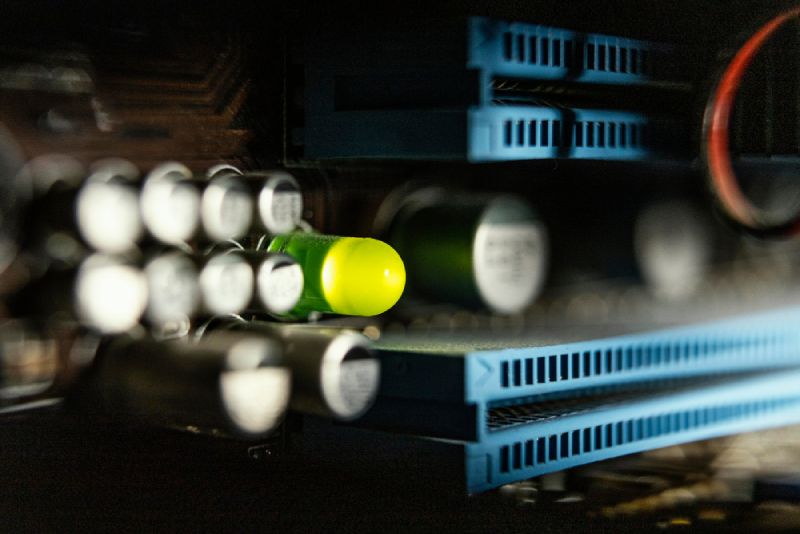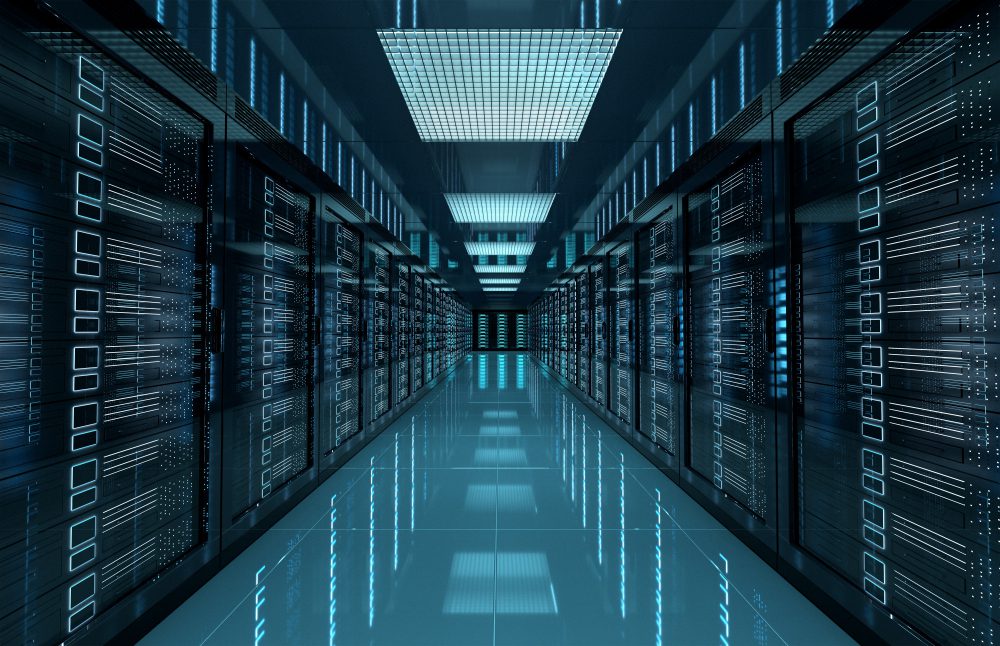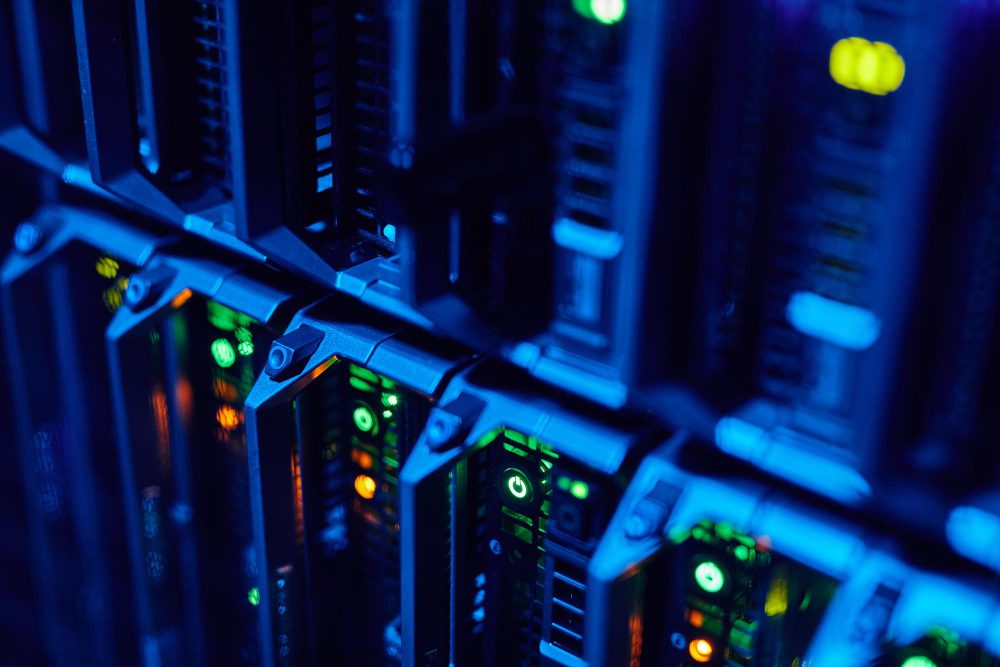Should I use HDD or SSD for NAS storage?
In today’s digital age, data storage has become an essential part of our lives. With the increasing need for storing and accessing large amounts of data, Network Attached Storage (NAS) devices have gained popularity. When setting up a NAS system, one crucial decision that needs to be made is whether to use Hard Disk Drives (HDDs) or Solid-State Drives (SSDs) for storage. Both options have their pros and cons, and understanding these differences is crucial in making an informed choice.
HDDs: Affordable with High Capacity
HDDs have been the traditional choice for storage due to their affordability and high capacity. These mechanical drives use spinning magnetic platters to store data and have been around for several decades. The key advantages of HDDs are their relatively low cost per terabyte and their ability to offer large storage capacities, often reaching multiple terabytes.
However, HDDs also have some drawbacks. Due to their mechanical nature, they are more prone to failure and can be sensitive to physical shocks. Additionally, they have slower read and write speeds compared to SSDs. This can be a limiting factor in applications that require fast access to data, such as video editing or database management.
SSDs: Speed and Reliability
SSDs, on the other hand, have gained prominence in recent years due to their speed and reliability. Unlike HDDs, SSDs have no moving parts and use flash memory technology to store data. This eliminates the mechanical limitations of HDDs and allows for significantly faster data access and transfer speeds.
Furthermore, SSDs are more resistant to physical damage and shocks, making them ideal for portable NAS systems that may be moved frequently. They also consume less power, generate less heat, and produce no noise, making them an energy-efficient and silent option.
“SSDs offer faster data access and transfer speeds compared to HDDs, making them ideal for applications that require quick access to data.”
Choosing the Right Option
When deciding between HDDs and SSDs for NAS storage, there are a few factors to consider. Firstly, your budget may play a significant role in the decision-making process. HDDs are generally more affordable, making them suitable for those on a tight budget or requiring large storage capacities.
Additionally, think about the specific use case for your NAS system. If you require fast access to data or are running applications that demand high-performance storage, an SSD might be the better choice. On the other hand, if you prioritize cost-effectiveness and need to store a massive amount of data without requiring rapid access, HDDs can be a viable option.
“Factors to consider when choosing between HDDs and SSDs for NAS storage include budget, performance requirements, and storage capacity needs.”
Does SSD improve NAS speed?
When it comes to Network Attached Storage (NAS), the choice of storage media plays a critical role in determining the overall speed and performance of the system. Traditionally, NAS devices have used hard disk drives (HDDs) for data storage. However, with the advent of Solid-State Drives (SSDs), there has been a growing interest in whether SSDs can significantly improve NAS speed.
Understanding the Differences
Hard Disk Drives (HDDs) use spinning platters and mechanical read/write heads to store and retrieve data. While they offer large storage capacities at comparatively lower prices, their performance is limited by the mechanical nature of their operation.
Solid-State Drives (SSDs), on the other hand, use integrated circuits to store data. They have no moving parts, which makes them much faster and more reliable than HDDs. SSDs offer significantly higher random access speeds, making them ideal for applications that require quick data retrieval.
Benefits of Using SSDs in NAS
By incorporating SSDs into a NAS setup, users can expect several performance benefits:
- Faster Data Access: SSDs’ faster random access speeds enable quicker data retrieval, resulting in reduced latency and improved overall system responsiveness.
- Higher Throughput: SSDs offer faster sequential read and write speeds, allowing for smoother data transfer and improved throughput when handling multiple simultaneous requests.
- Improved I/O Performance: The low latency and high IOPS (Input/Output Operations Per Second) of SSDs make them particularly suitable for intensive workloads, such as virtualization or database hosting.
Considerations and Limitations
While SSDs bring numerous benefits to NAS systems, there are a few considerations to keep in mind:
- Cost: SSDs are generally more expensive than HDDs, especially for higher storage capacities. However, prices have been steadily decreasing, making SSDs more accessible.
- Write Endurance: SSDs have limited write endurance compared to HDDs. However, this limitation is less of a concern for NAS systems that primarily involve read-heavy operations.
- Capacity: The maximum capacity of SSDs may be lower than that of HDDs, which could be a limiting factor for users requiring large amounts of storage space.
“Using SSDs in a NAS setup can significantly enhance the user experience by providing faster data access and improved system performance.”
Are NAS drives good for storage?
A Network Attached Storage (NAS) drive is a dedicated storage device that connects to your network, allowing multiple users to access and share data simultaneously. It offers several advantages over traditional external hard drives, making it an excellent choice for storage.
Advantages of NAS drives:
- Centralized storage: NAS drives provide a centralized location for storing and accessing files, eliminating the need for individual external hard drives.
- Easy file sharing: NAS drives enable easy file sharing among multiple users or devices connected to the same network, improving collaboration and productivity.
- Data protection: NAS drives often have built-in redundancy features such as RAID configurations, which protect against data loss in case of drive failure.
- Remote access: Many NAS drives offer remote access functionality, allowing you to access your files from anywhere using a secure internet connection.
Considerations before investing in a NAS drive:
Before purchasing a NAS drive, it’s essential to consider your specific storage needs. Evaluate factors such as storage capacity, performance requirements, and budget.
Storage capacity: NAS drives come in various capacities, ranging from a few terabytes to multiple petabytes. Determine how much storage space you require to accommodate current and future data needs.
Performance: Consider the performance requirements of your storage solution. If you primarily deal with large files or require fast data transfer speeds, opt for a NAS drive with higher RPM drives or solid-state drives (SSDs).
Connectivity options: Ensure the NAS drive supports the necessary connectivity options to connect it to your network. Common options include Ethernet, Wi-Fi, and USB ports.
Backup and data protection: Look for NAS drives that offer robust backup features such as scheduled backups, snapshot support, and cloud integration to ensure the safety of your data.
Expandability: Consider the scalability of the NAS drive. Ensure it supports expanding storage capacity by adding additional drives or utilizing expansion units.
In conclusion,
NAS drives are an excellent choice for storage due to their centralized access, easy file sharing, data protection features, and remote accessibility. Before investing in a NAS drive, carefully assess your storage requirements and consider factors such as storage capacity, performance, connectivity, backup options, and expandability to make the best decision for your specific needs.
Why Add More RAM to NAS?
The network-attached storage (NAS) device has become an essential component in modern homes and businesses, providing a centralized location for storing and accessing data. While NAS devices typically come equipped with a certain amount of RAM, there are several reasons why adding more RAM can significantly enhance their performance.
1. Improved Multitasking
By adding more RAM to your NAS, you can enhance its ability to handle multiple tasks simultaneously. With additional RAM, the NAS can allocate more memory to each task, resulting in faster and smoother operations. This is especially beneficial for businesses that require their NAS to handle heavy workloads or multiple users accessing data simultaneously.
2. Increased File Transfer Speeds
RAM plays a crucial role in file transfers as it acts as a buffer for temporary data. When you add more RAM to your NAS, it allows for larger buffers, enabling faster file transfers. This improvement is particularly noticeable when dealing with large files or transferring data across the network.
3. Enhanced Data Access Speed
The amount of RAM available in a NAS directly affects its ability to cache frequently accessed data. When more RAM is added, the NAS can store a larger portion of frequently accessed data, resulting in quicker access times. This is especially beneficial for applications that require fast access to data, such as media streaming or virtual machine storage.
4. Improved Virtualization Performance
If you use your NAS for virtualization purposes, adding more RAM can greatly enhance its performance. Virtual machines require a significant amount of memory, and by increasing the RAM capacity of your NAS, you can improve the overall performance and responsiveness of your virtual environment.
5. Future-Proofing Your NAS
Adding more RAM to your NAS not only improves its current performance but also future-proofs it. As software and applications become more resource-intensive over time, having additional RAM ensures that your NAS can keep up with these evolving requirements.
“Adding more RAM to your NAS can significantly enhance its performance, improve multitasking capabilities, increase file transfer speeds, enhance data access speed, improve virtualization performance, and future-proof your device.”
In conclusion, if you want to extract the maximum potential from your NAS and optimize its performance, adding more RAM is a wise investment. It allows for better multitasking, faster file transfers, improved data access speed, enhanced virtualization performance, and ensures your NAS remains capable of handling future demands.
Can HDD last 10 years?
Hard Disk Drives, commonly known as HDDs, have been the standard storage solution for computers for decades. However, with the rise of Solid-State Drives (SSDs), many people question the longevity of HDDs and whether they can last for a decade or more. Let’s take a closer look at this matter.
The Lifespan of HDDs
HDDs consist of mechanical parts, including spinning disks and a read/write head. These moving components can wear out over time, leading to potential failures. The lifespan of an HDD depends on several factors, such as usage patterns, operating conditions, and manufacturing quality.
Manufacturers typically warranty their HDDs for a specific period, usually around three to five years. However, this warranty doesn’t necessarily mean that the drive will fail immediately after it expires. Many HDDs continue to function well beyond their warranty period, even up to ten years or more.
Factors Affecting HDD Lifespan
Several factors can affect the lifespan of an HDD:
- Usage: Constant use or heavy workload can put more stress on the drive, potentially reducing its lifespan.
- Operating Conditions: Extreme temperatures, high humidity, and dust can all impact the longevity of an HDD. It is recommended to keep the drive in a cool, dry, and clean environment.
- Power Surges: Sudden power surges or electrical fluctuations can damage the delicate components of an HDD. Using surge protectors can help mitigate this risk.
Ensuring Longevity
To maximize the lifespan of your HDD, it is essential to take proper care of it:
- Backup: Regularly backup your data to an external source or cloud storage to protect against potential HDD failures.
- Defragmentation: Periodically defragmenting your HDD can help optimize its performance and extend its lifespan.
- Avoid Physical Damage: Handle your HDD with care, avoiding dropping or mishandling it. Even a minor physical shock can cause irreversible damage to the drive.
“While HDDs can last for many years, it is always recommended to have a backup of your important data.”
In conclusion, while HDDs can last for a decade or more, their lifespan depends on various factors. By taking proper care of your HDD and following best practices, you can potentially extend its longevity and ensure the safety of your data.
What is the best way to store data for 10 years?
Introduction
As technology advances, the need to store data for extended periods of time becomes more crucial. Whether you are a business owner, an individual, or an organization, ensuring that your data is securely stored and easily accessible for 10 years or more is essential. In this article, we will explore some of the best ways to store data for long-term preservation.
Local Storage
One option for storing data is on local storage devices such as hard drives or solid-state drives (SSDs). These physical devices offer high capacity and can be easily accessed. However, they are susceptible to damage from physical factors like fires, floods, or even simple hardware failures. To mitigate this risk, it is recommended to store multiple copies of the data on different storage devices and regularly check their integrity.
Cloud Storage
Another popular option is cloud storage, which allows you to store your data remotely on servers maintained by a third-party provider. Cloud storage offers advantages such as scalability, accessibility from anywhere with an internet connection, and automatic backups. Many cloud storage providers also implement rigorous security measures to protect your data. However, it is important to choose a reliable and reputable provider that meets your specific storage requirements.
Optical Storage
For long-term data storage, optical storage devices like DVDs or Blu-ray discs can be a suitable option. They have a longer lifespan compared to traditional magnetic storage devices and are less vulnerable to physical damage. However, they have limited storage capacity and can be cumbersome to manage large volumes of data. Additionally, the technology may become obsolete in the future, making it harder to access the stored data.
Online Archiving Services
If you have important data that needs to be preserved for an extended period, utilizing online archiving services could be a viable solution. These services specialize in long-term data preservation, ensuring the integrity and accessibility of your files. They often combine multiple storage technologies, including redundant backups, encryption, and regular data verification.
Data Migration Plan
No matter which storage option you choose, it is important to have a solid data migration plan. Technology evolves rapidly, and storage formats can become obsolete over time. It is crucial to periodically migrate your data to newer storage mediums or formats to ensure compatibility and prevent data loss.
Conclusion
In conclusion, incorporating SSDs into a NAS setup can bring substantial performance improvements, especially in terms of data access speed and overall system responsiveness. However, users should carefully consider factors such as cost, write endurance, and capacity requirements before making the switch. With the continuous advancements in SSD technology and declining prices, SSDs are becoming an increasingly attractive option for enhancing NAS speed and performance.
When deciding on the best way to store data for 10 years or more, it is essential to consider factors such as data security, accessibility, and potential obsolescence. Whether you opt for local storage, cloud storage, optical storage, or online archiving services, always prioritize redundancy, regular backups, and periodic data migration to safeguard your valuable information.



